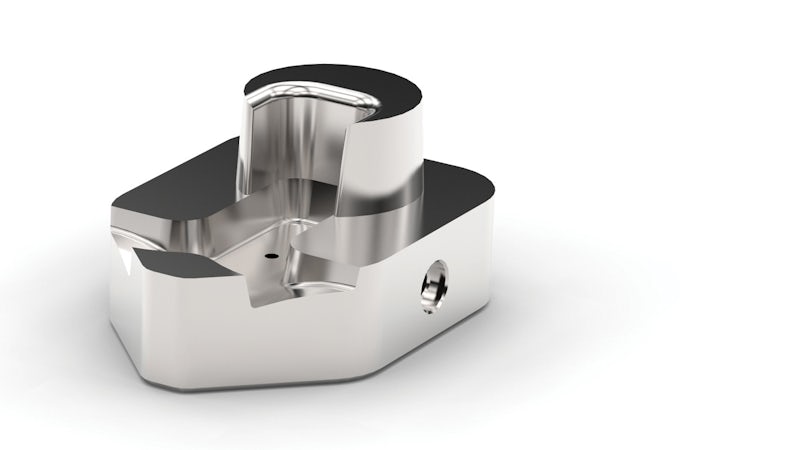Automotive mechanical parts supplier uses Solid Edge and NX to accelerate machine programming time
LCN Mecánica uses Siemens Digital Industries Software solutions to significantly decrease programming errors and incorporate 4-axis machines
LCN Mecánica
Founded in 2005, LCN Mecánica supplies mechanical components to the automotive industry’s international Tier 1s and OEMs, such as engine parts, pump lids, brake systems and seat brackets. The firm produces these parts using techniques such as stamping, machining, casting, fine blanking and assembly.
http://www.lcn.es- Headquarters:
- Guadalajara, Spain
- Products:
- Solid Edge Cam Pro, Solid Edge
- Industry Sector:
- Automotive & transportation
One of the most obvious consequences since we began programming with Solid Edge CAM Pro is the speed. For example, programming one part that requires 20 drills at the foot of the machine could have taken me an hour. Now it takes me 10 minutes.
LCN Mecánica
Meeting greater demands
Founded in 2005, LCN Mecánica supplies mechanical components such as engine parts, pump lids, brake systems and seat brackets for the automotive industry’s Tier 1s and original equipment manufacturers (OEMs) using techniques such as stamping, machining, casting, fine blanking and assembly.
The company produces 3 million parts per year, employs 200 people and has a large production plant in Guadalajara, Spain, near Madrid. In 2010, LCN Mecánica opened a commercial office in Germany in order to expand its Tier 1 client portfolio, which now includes a Tier 1 automotive supplier.
LCN Mecánica is shifting its focus to align with ever-increasing market changes. As a result, the factory plans to mass produce complex powertrain systems.
“Increasingly, the company is moving from the manufacturing of parts to the assembly and provision of entire mechanisms, something which implies greater demands in terms of quality, design and manufacturing,” says Lorenzo Caballero, manager, LCN Mecánica.
LCN Mecánica’s industrial design team, which is part of the engineering department, consists of eight people (six industrial engineers) divided into two large production areas:
• Casting and machining
• Conventional blanking and fine blanking
Problem area
LCN Mecánica has a team of two people programming computer numerical control (CNC) machines. One is in charge of the 11 manufacturing machines, while the other manages the three wire machines. As recently as 2015, programmers prepared the program in the same language that the CNC machine would execute it in, which can be tedious and error-prone and only served to delay the process. In addition, clients were increasingly requesting geometrically complicated parts, making manual programming virtually impossible in most cases.
The company also saw the need to incorporate 4- and 5-axis CNC machines, which without a CAM would have been complicated to program. Small modifications in the design of the parts forced the technicians to reprogram the machines, resulting in time wasted on an operation that was becoming increasingly habitual due to quality standards.
“In maintenance, we want to do more things but were limited by manual programming and its lower level of accuracy,” says Borja Fernández, technician in charge of machine programming at LCN Mecánica. “Especially in the mold part; without a CAM we weren’t able to do much more.”
Siemens Digital Industries Software is the solution
In 2015, LCN Mecánica decided to implement a computer-aided manufacturing (CAM) system, which was completed at the end of 2106 by Prismacim, an official supplier for Siemens Digital Industries Software. The goal in implementing the CAM system was to avoid reprogramming the machines when changes occur in the design of the parts. The connection between the CAM and Siemens’ computer-aided design (CAD) made this possible. As a result, LCN Mecánica has now incorporated a 4-axis machine and programs the machine from the CAM.
“Having Solid Edge® software as our CAD system was a determining factor for us deciding on Solid Edge™ CAM Pro,” Fernández says. “One of the most obvious consequences since we began programming with Solid Edge CAM Pro is the speed. For example, programming one part that requires 20 drills at the foot of the machine could have taken me an hour. Now it takes me 10 minutes.”
In addition to the benefit of accelerating the programming process, Fernandez explains that using Solid Edge CAM Pro helps to eliminate the possibility of error while automatically updating.
“When programming by hand, the possibility of an error occurring is far greater,” Fernández says. “By hand, a dot only needs to jump from 13 to 1.3 for the part to be faulty, something that doesn’t happen with the CAM.
“Now when the design of a part is modified, the effective communication between Solid Edge and the CAM allows for the programming to be updated automatically without our intervention.”
Postprocessing and simulation
“With the CAM, the most important thing is that the postprocessors are perfectly adjusted so that the machine does exactly what we have programmed,” Fernández says. “If we were to insert what we have programmed in the machine and it didn’t do it, it would be pointless.”
Solid Edge CAM Pro incorporates the PostBuilder function, which enables LCN Mecánica to create and edit the postprocessors that Prismacim sends in order to fully adjust them to each machine.
Javier Hernández, industrial design team leader at LCN Mecánica, says: “Another aspect that we really value as well is the simulation module, which enables us to check that there are no programming errors.”
Maintenance of tools
The CAD programming is also serving to improve the maintenance of the cutting tools, which are attached to the machines, allowing the LCN Mecánica technicians to perform other types of inputs, such as tangential ones that help the tools last longer.
Now when the design of a part is modified, the effective communication between Solid Edge and the CAM allows for the programming to be updated automatically without our intervention.
LCN Mecánica
